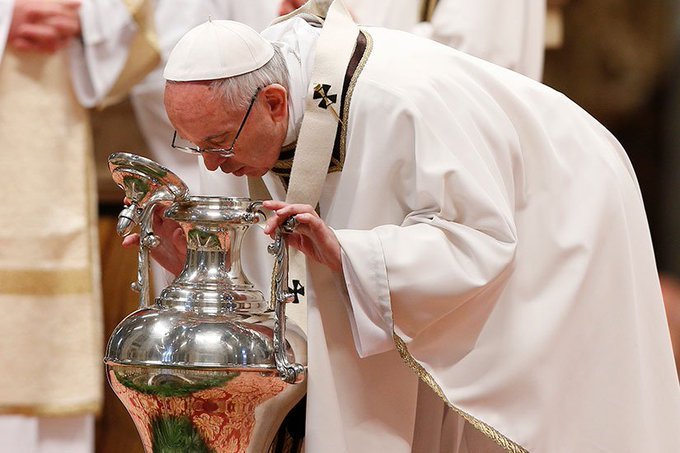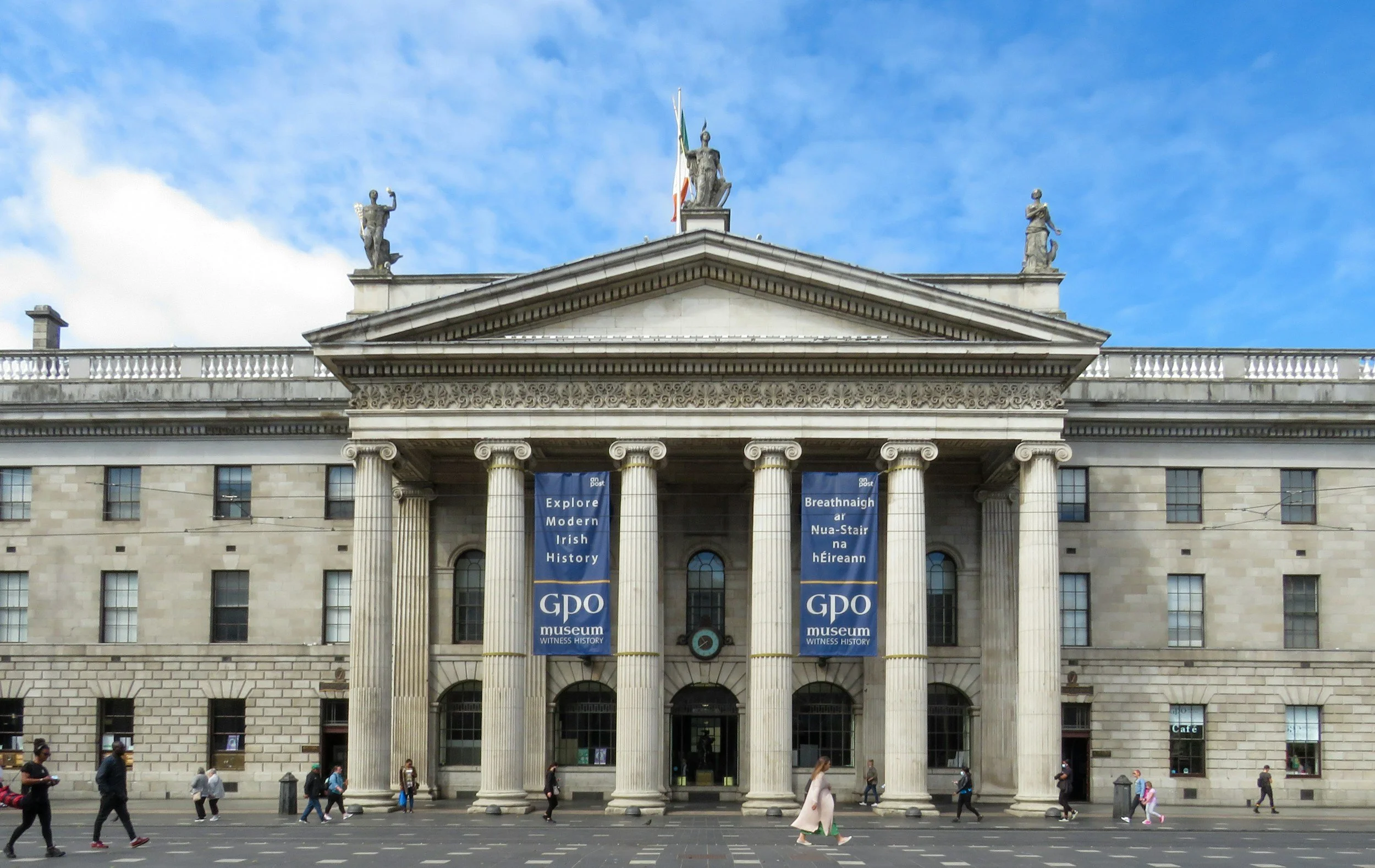…at least once!
Up to four stalwart parishioners and our Parish Priest make the annual Easter-Week trek to the Chrism Mass at St. Joseph’s Basilica, Edmonton, Canada.
I was a tad curious about the Chrism Mass — but not so curious as to ever volunteer for the long trip on a working day! The round-trip from our parish includes 4-5 hours of driving (and we are not even the most remote parish.) Fr. Ben was scraping the barrel of conscripts volunteers, when he invited me to this year’s Chrism Mass. Thank God he did so!
WHAT IS THE CHRISM MASS?
The Chrism Mass is a concelebration with the Archbishop and ALL of the priests of the Archdiocese. During mass there are additional rites, including the blessing of the Holy Oils and the renewal of priestly promises. After mass, the Holy Oils are distributed to each parish. (Substitute ‘bishop’ & ‘diocese’ where applicable.)
The Chrism Mass is a curious mixture of very formal elements (incense; chants in English & Latin; multiple altar servers, etc.) with a friendly, welcoming and inclusive ceremony – a delightful juxtaposition I have not experienced at any other celebration.
THE ORDER OF THE MASS
Procession of Archbishop & Priests into the Basilica.
Liturgy of the Word.
Renewal of Priestly Promises.
Blessing of Oils and Consecration of the Chrism.
Liturgy of the Eucharist.
Communion Rite.
Distribution of the Oils.
The Chrism Mass is traditionally celebrated on Maundy Thursday. That date may change depending on local factors and our Archdiocese holds the Chrism Mass at 7 p.m. on the Monday starting Holy Week.
A common hurdle in North America is the geographical size of many Diocese. Alberta & Ireland have similar populations but Alberta is 255,000 square miles while the whole of Ireland is a scrawny 32,000 square miles! Ireland has 4 archdiocese & 22 suffragan (subsidiary) Diocese serving a much higher concentration of Catholics, while Alberta has only 1 Archdiocese and 2 suffragan Diocese.
(Archbishop Richard Smith concelebrating with the college of Presbyters)
THE HOLY OILS
The Bible references the use of olive oil as a food, fuel for lamps, medication, anointing and in burial preparation. During the Chrism Mass the Archbishop blesses three containers of olive oil which become:
The Oil of Catechumens: Oleum Catechumenorum or Oleum Sanctorum
OS is used during the sacrament of Baptism after the priest offers a prayer of exorcism and then anoints the person to be baptized on the chest, saying, "We anoint you with the oil of salvation in the name of Christ our Savior; may He strengthen you with His power, who lives and reigns forever and ever."
The Oil of the Infirm: Oleum Infirmorum
OI is used in the sacrament of the Anointing of the Sick — formerly ‘Extreme Unction.’ When anointing the forehead the priest says, "Through this holy anointing, may the Lord in His love and mercy help you with the grace of the Holy Spirit," and when anointing the hands he says, "May the Lord who frees you from sin, save you and raise you up."
Holy Chrism: Sacrum Chrisma
SC is a mixture of olive oil and balsam. This oil is used in the sanctification of individuals and specifically is used in the sacraments of Baptism, Confirmation, and Holy Orders, since they “impart an indelible sacramental character.”
(Much of this information came from: https://catholicexchange.com/what-is-the-chrism-mass/ and https://catholiceducation.org/resources/the-use-of-sacramental-oils )
When blessing the Holy Chrism the concelebrants extend their right hands toward the chrism as the bishop says the consecratory prayer, signifying that with their bishop they share “in the authority by which Christ Himself builds up and sanctifies and rules His Body,” the Church. (Vatican II, Decree on the Ministry and Life of Priests, No. 2).
(Pope Francis blowing on the Oil of Chrism)
Around the world, every Bishop, Archbishop and even the Holy Father, breathe over the vessel of chrism, symbolizing both the Holy Spirit coming down to consecrate the oil, and the life-giving, sanctifying nature of the sacraments Baptism, Confirmation and Holy Orders.
DISTRIBUTION OF OILS
After the Chrism Mass there is the Rite of Reception of the Oils where the parish representatives with their parish priest come to the Archbishop to receive the Holy Oils which are to be used throughout the liturgical year.
UNITY
All of the events at the Chrism Mass reinforce each parish's and each priest’s unity with their bishop/archbishop. For priests this is especially through the renewal of their priestly promises and the concelebration of mass.
Later, the bishop is symbolically present every time a Holy Oil is used in a sacrament.
Indeed, through the Chrism Mass there is a palpable unity with every diocese throughout the Church — past and present! Bishops, archbishops and even the Holy Father blesses these oils in the same way bishops, archbishops and popes have blessed the oils for (at least) the last 1800 years!
(Chrism Mass at the Holy Sepulchre.)
Pope Benedict explained how the Holy Oils accompany us on our journey of faith.
“Thus oil, in its different forms, accompanies us throughout our lives: beginning with the catechumenate and baptism, and continuing right up to the moment when we prepare to meet God, our Judge and Savior.”
Every good Catholic should attend the Chrism Mass at least once in their life!
Kevin Hay
(You can follow Kevin on Twitter @kevinhay77)
Most photos taken from the Catholic Archdiocese of Edmonton Facebook page: @archedmonton











